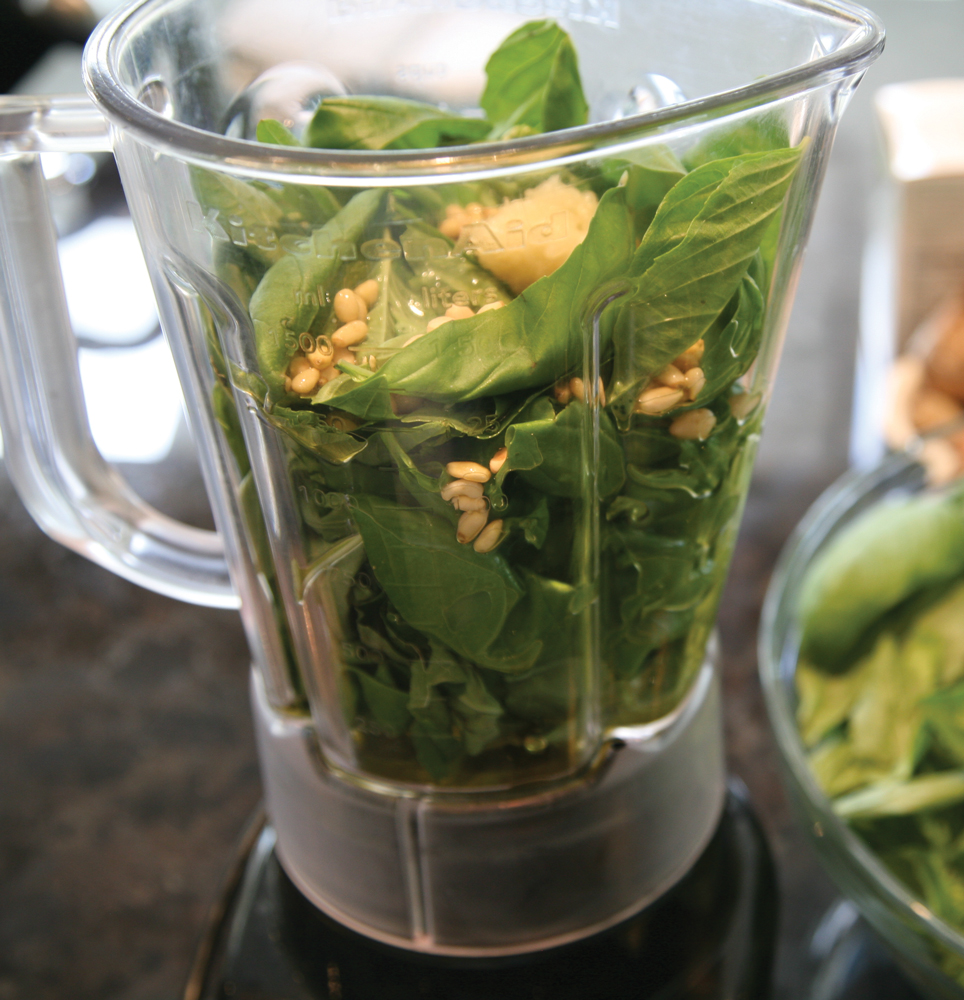Dishes
Spinelli loves to use basil to make pesto and Caprese salad. Basil’s mild and sweet flavour complements a range of foods and, while traditional uses include pesto, salad and pizza, chefs are getting creative. Basil is often used in traditional curries and stir-fries, and simple recipes include placing a basil leaf in a bottle of olive oil to add flavour for a salad dressing. The herb is also a key ingredient in unique drinks and desserts, including basil and lime sorbet, cinnamon basil ginger pound cake and basil pineapple-orange coolers.
Grow Your Own Basil
Steinraths recommends starting culinary basil by seed indoors in early spring. If starting basil from seed or nurturing an already thriving plant, Steinraths urges growers to put the plant outside once the risk of frost has passed. Basil likes full sun and, once outdoors, the plant will grow on its own with little work.
How to Harvest?
Webber has a large basil plant he keeps outdoors in the summer and on his dining room table the rest of the year. Harvesting is simple. “We just snip off the leaves as we need it,” he says. It’s important to harvest the plant’s tops as they approach flowering because the pruning promotes branching and leaf production, says Steinraths.
The Recipe
Traditionally prepared in a mortar with a pestle, pesto is commonly used on pasta, potatoes, pizza and more. This simple and delicious recipe for the Italian Pesto alla Genovese comes from Kathryn Joel of Edmonton’s Get Cooking, which offers cooking classes for a range of food enthusiasts.
100 g fresh basil leaves
8 tbsp extra-virgin olive oil
25 g pine nuts
2 cloves garlic, crushed
Sea salt, to taste, and freshly ground black pepper
50 g Parmesan, grated (plus 4 tbsp if not using Pecorino)
4 tbsp Pecorino Romano, grated (optional)
Method
Put the basil, oil, pine nuts and garlic in a blender and blend on high until pured.
Place in a bowl and stir in the cheese, then season to taste with salt.
Use right away, or store in the fridge covered with a film of olive oil to preserve the colour of the pesto.
Like this content? Get more delivered right to your inbox with Ed. Eats
A list of what’s delicious, delectable and delightful.
